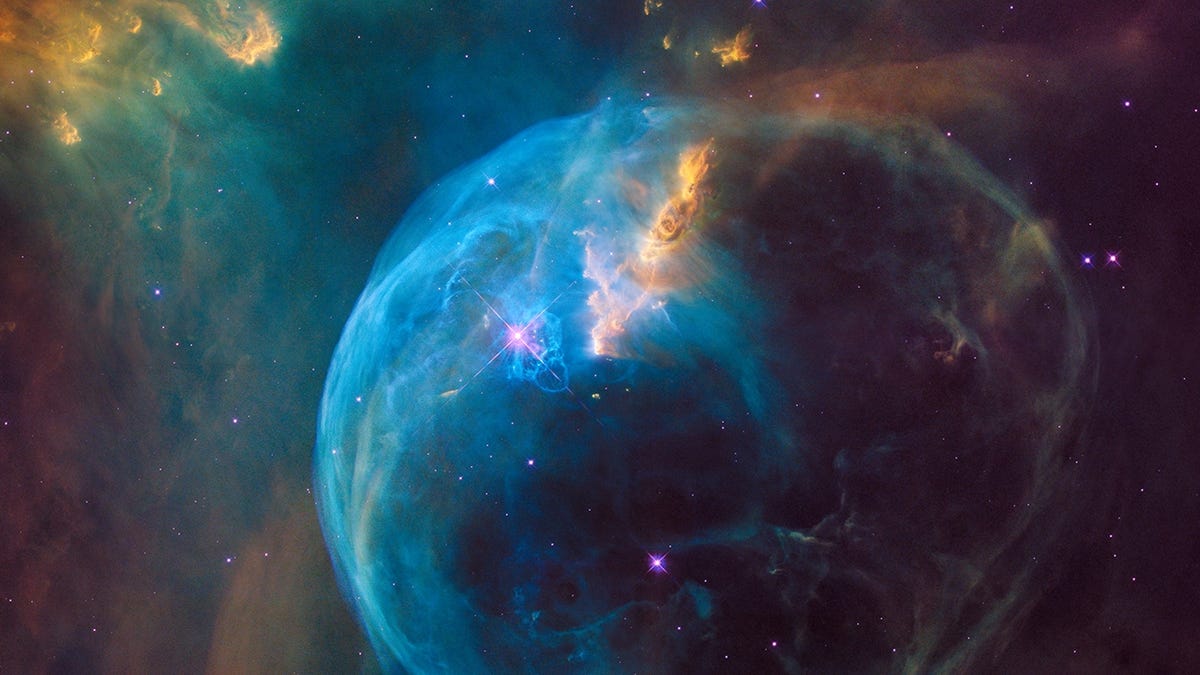Hubble's bubble: Space telescope captures gorgeous Bubble Nebula
Hubble celebrates its anniversary with a new picture of the Bubble Nebula, showing its entire glory in one image for the first time.
The Hubble Space Telescope was launched into orbit around the Earth 26 years ago, on April 24, 1990, and to celebrate the momentous occasion, a gorgeous new image has been added to the Hubble Heritage gallery.
NGC 7653 is also known as the Bubble Nebula, and it doesn't take a genius to figure out why. It looks like a delicate soap bubble hanging in space. It's so large, this is the first time we've seen it in its entirety in one image, made possible by the Wide Field Camera 3, installed on the telescope in 2009. Previously, Hubble imaged the nebula in 1998 and 2000.
It's actually an emission nebula (the kind that emits its own light from within), located 7,100 light-years away within the constellation of Cassiopeia, discovered in 1787 by William Herschel. It's lit by two sources: inside the nebula is a very young, hot, massive star, the winds from which are blowing the gas and dust outward to shape the nebula.
Meanwhile, a giant molecular cloud nearby excites the nebula, which causes the material itself to glow.
These two factors are also shaping the nebula. The star, called SAO 20575 and 10 to 20 times more massive than the sun, is pushing the nebula outward at a rate 0f 100,000 kilometres per hour. It currently measures 10 light-years across, a distance that could fit the solar system (if you take its border as the heliopause) over 3,500 times.
But the molecular cloud contains the rate of this expansion, and the result is a beautifully symmetrical cosmic object.
It's not entirely symmetrical. SAO 20575 is the bright star you see inside the bubble toward the top left; and, as you can see, it's not centred exactly. Astronomers aren't sure why, therefore, the bubble itself is so beautifully shaped, though perhaps the molecular cloud has something to do with that.
If you look just to the right of the star, you'll see a structure. This is made of cometary knots, which are thought to be a common feature of planetary nebulas (so named because they resembled planets to Herschel, not because they contain planets). They are about the size of the solar system, with masses comparable to Earth, and are named for their shape, a knot of matter with a trailing tail. The knot is generally 1,000 times denser than its tail.
If you want a wallpaper-size version of this image, you can grab it here.


